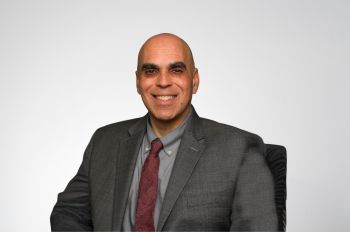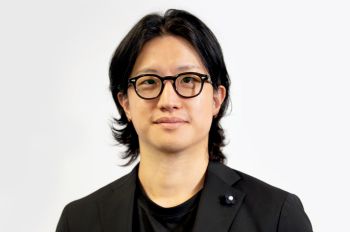Undergraduate Students Awarded Spring 2016 Armour R&D Fellowships
Twelve Armour College of Engineering undergraduate students and their faculty mentors have been awarded Spring 2016 Armour R&D Fellowships. The program, an Armour College of Engineering Distinctive Education initiative, offers undergraduate engineering students the opportunity to gain hands-on research and development experience in the lab of a faculty mentor.
Nine students funded during the spring term are new to the program, while three students will continue projects they started during prior semesters. Students have been selected to participate in the program based on the quality of project proposals submitted. The proposals are reviewed and selected by Natacha DePaola, Carol and Ed Kaplan Armour College Dean of Engineering, and the Distinctive Education Council.
Armour R&D will run for ten weeks, culminating with the 2nd Annual Armour R&D Expo to be held on April 7, 2016. During the Expo, students who participated in Armour R&D during the 2015-2016 academic year will share the results of their work and compete for awards in a poster competition.
The Spring 2016 Armour R&D projects are categorized under the four IIT Engineering Themes: Water, Health, Energy, and Security. These themes represent areas in which engineers can create solutions of global impact that advance society.
Water
Svetlana Taylor (CHE, 4th year) and Associate Dean of Academic Affairs in Armour College of Engineering, Associate Professor of Environmental Engineering, Director of Environmental Engineering, and Co-Director of Undergraduate Initiatives and Enrichment Programs for Armour College of Engineering, Paul Anderson, will continue work on their MIND project Improving Original Design of the SAP First-Flush Diverter for Rainwater Collection. The team seeks to develop an improved design for a first-flush diverter that prevents the initial roof runoff from entering rainwater collection systems. To improve the device, the team aims to reduce the occurrence of polymer expansion and breakage, increase the flow of water in the device, and improve the effectiveness of the filter fabric. Taylor began the project during the spring of 2015 as part of the class ENGR 497: Introduction to Research Methods and continued it as part of the Fall 2015 Armour R&D Program.
Health
Vasundhara Agrawal (BME, 3rd year) and Assistant Professor of Biomedical Engineering, Kenneth Tichauer, will begin work on their project Solutions to Mathematical Models Governing Diffusion of Imaging Agents in Healthy and Cancerous Breast Tissue to Study Their Effect on Quantitative Accuracy in Lumpectomy Margin Assessment. Dr. Tichauer’s research team is working to develop a wide area surface-imaging device for quantitative molecular phenotyping of various cell-surface tumor biomarkers in order to detect residual tumors during a lumpectomy. This device will help doctors ensure that they have removed all remnants of a cancerous tumor during surgery, hopefully preventing future operations and the spread of the tumor. Vasundhara will advance equations that govern the diffusion of imaging agents in healthy and cancerous breast tissue. This will help the team better understand the role diffusion, and potentially convection, has on the ability of the imaging device to detect residual tumors.
Abigail Avila (BME, 4th year) and Duchossois Leadership Professor and Professor of Biomedical Engineering, Eric Brey, will begin work on their project Evaluation of Hydrogels in PEG-PLLA-DA and PEG-DA. The team will study the degradation rates of hydrogels composed with varying ratios of poly(ethylene glycol-latic acid) diacrylate (PEG-PLLA-DA), a degradable copolymer and poly (ethylene glycol) diacrylate (PEG-DA), a non-degradable copolymer. This research will help the team create hydrogel scaffolds for tissue engineering that have different degradation kinetics for use in future studies.
Kush Herur (BME, 4th year) and Assistant Professor of Biomedical Engineering, Kenneth Tichauer, will continue work on the project Born Normalization Shows Early Photons Improve Image Quality. Dr. Tichauer’s research team has been developing a device that uses early-photon fluorescence projection tomography to construct a 3D map of a tissue sample such as a cancerous tumor. This technique will allow doctors to visualize the heterogeneity of the sample, which could lead to cancer treatments that target different characteristics within the same tumor. Herur will build off his previous research by studying the relationship between optical properties of tissue and variations in image data produced by the imaging device being developed. His research will help refine the accuracy of the device.
Sherly Lande (CHE, 3rd year) and Assistant Professor of Chemical Engineering, Nancy Karuri, will begin work on their project The Production of Fibronectins Domains Harvested from Escherichia Coli via Electrophoresis. Fibronectin (FN) is important for blood clotting, healing, and promoting or disrupting diseases such as cancer and fibrosis. The team hopes better understand how they can alter conditions during the growth of E. coli to produce more FN. The FN they harvest will be used in research projects being carried out in Dr. Karuri’s lab.
Mete Morris (CE, 3rd year) and Associate Professor of Electrical and Computer Engineering, Erdal Oruklu, will further work they started during the Fall 2015 Armour program for their project Policy Driven Management System for Personal Health Monitoring. The team aims to refine a policy driven management system for tele-health devices that can dynamically change how its systems operate based on changes in a patient’s condition or activity. This will allow for more accurate and energy efficient devices that monitor the health of patients and alert officials in case of an emergency.
Omar Sherif Tawakol (BME, 2nd year) and Associate Dean of Armour College of Engineering and Professor of Biomedical Engineering, Philip Troyk, will begin work on the MIND project Development for a Device for the Implantation of Neural electrode Arrays. Tawakol plans on developing a refined design for a tool used to safely and efficiently insert wireless electrode arrays into neural tissue. The electrodes inserted by the device will connect to a intracortical visual prosthesis (IVCP) that is being developed by Dr. Troyk’s research group. The IVCP will help restore vision in blind patients by producing a set of phosphenes the patient can use as visual perception.
Nirja Shah (BME, 3rd year) and Assistant Professor of Biomedical Engineering, Kenneth Tichauer, will begin work on their project Investigating the Effect of Tissue Staining and Rinsing Protocols for Accurate Analysis of Remnant Cancer at the Margins of Breast Surgery Tissue Samples. Dr. Tichauer’s research team is working to develop a wide area surface-imaging device for quantitative molecular phenotyping of various cell-surface tumor biomarkers in order to detect residual tumors during a lumpectomy. This device will help doctors ensure that they have removed all remnants of a cancerous tumor during surgery, hopefully preventing future operations and the spread of the tumor. Shah will focus on researching how tissue staining and rinsing protocols affect the accuracy of the imaging device being developed.
Energy
Oscar Guzman (CHE, 3rd year) and S.C. Johnson Professor of Chemical Engineering and Director of the Center for Complex Systems and Dynamics, Fouad Teymour, will begin work on their project Developing a Phase Diagram for Biocomposites of Algae and Cyanobacteria. Prior research has shown that growing algae in biocomposites using a photobioreactor greatly increases the yield of algae harvested. It has also been observed that the composition of the photobioreactor drifts slowly over long periods of time and under varying seasonal conditions. To better understand how to control this phenomenon, Guzman will make samples with varying ratios of algae and cyanobacteria to determine if any phase transitions exist at certain composition values. This will help the researchers in the lab optimize the operation of the photobioreactor and control phase transitions during production.
Mark Latocha (ME, 5th year) and Assistant Professor of Mechanical Materials and Aerospace Engineering, Carrie Hall, will begin work on their project Dual Fuel Internal Combustion Engine Modeling and Optimization. In the lab, engines with dual fuel combustion have been shown to emit less pollution and run more efficiently than traditional internal combustion engines. When these designs are scaled-up, fluctuations between the cylinders reduce their efficiency. The team will utilize modeling software to pinpoint the factors that cause performance fluctuations between cylinders in dual fuel engines. This will help the team to modify their engine designs to mitigate these fluctuations and perform more efficiently when scaled up.
Sungjin Park (ME, 5th year) and Assistant Professor of Mechanical Materials and Aerospace Engineering, Carrie Hall, will begin work on their project Applying Reactivity Controlled Compression Ignition on Multi-Cylinder Engines. Engines with reactivity controlled compression ignition (RCCI) have demonstrated greater thermal efficiencies and reduced emissions over conventional internal combustion engines. When these designs are scaled-up, fluctuations between the cylinders reduce their efficiency. The team will run simulations with varying conditions in the engine model, to identify the factors causing the imbalance between the cylinders. This research will help further the development of cleaner and more efficient engines.
Hao Su (EE, 5th year) and Professor of Electrical and Computer Engineering and Associate Director of the Robert W. Galvin Center for Electricity Innovation, Zuyi Li will begin research on their project Energy Consumption Pattern Forecasting from Smart Meters. They will analyze raw data, provided by ComEd’s smart meters, to uncover patterns that might help reduce energy consumption. The team will then propose a forecast model that will be tested on 300 meters. Ultimately the model will be used to make personalized energy-saving recommendations.




